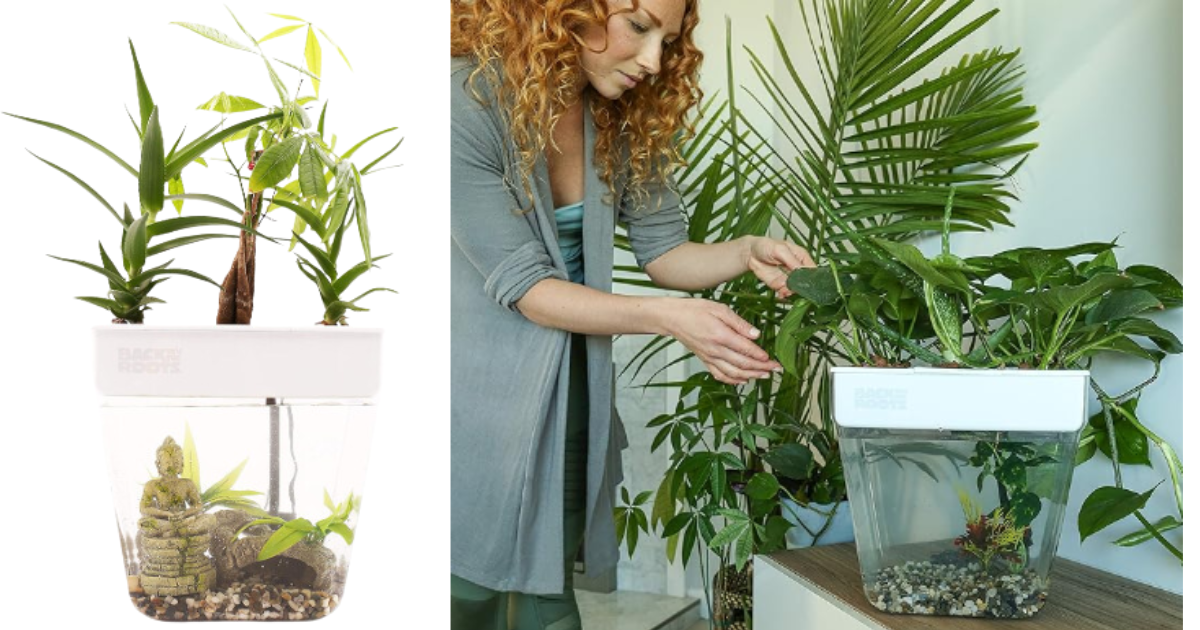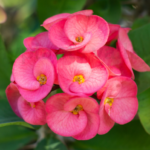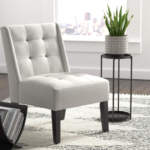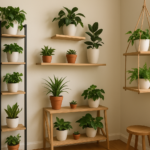Embarking on the indoor gardening journey opens up a world of possibilities, and the Back to the Roots Indoor Hydroponic Garden is at the forefront of this green revolution. As urban living spaces shrink and traditional gardening becomes more challenging, this 3-gallon self-watering, mess-free planter emerges as a beacon for plant enthusiasts. Imagine cultivating herbs, microgreens, bamboo, succulents, and houseplants effortlessly in the comfort of your home.
This article explores the wonders of the Back to the Roots Hydroponic Garden, delving into its features, benefits, and real-life experiences. From the satisfaction of growing your herbs to the aesthetic appeal of lush greenery in your living space, this hydroponic system promises a unique and rewarding gardening adventure. Join us as we uncover the secrets of successful indoor hydroponic gardening with Back to the Roots.
Features of Back to the Roots Indoor Hydroponic Garden
Indoor Hydroponic Garden

- 3 Gallon Self Watering,
- Mess-Free Planter for Herbs, Microgreens, Bamboo, Succulents, and Houseplants
- Material: Bamboo
- Feature:Low maintenance
Pros
- Space-Efficient: Ideal for small living spaces.
- Faster Growth: Plants thrive with direct nutrient access.
- Reduced Water Usage: Recirculating systems minimize wastage.
- Controlled Environment: Less susceptibility to pests and diseases.
- Versatile Plant Selection: Accommodates various plants.
Cons
- Higher Initial Cost: Specialized equipment may incur expenses.
- Learning Curve: Requires understanding nutrient balance and pH levels.
- Continuous Monitoring: Regular checks for water and nutrient levels are necessary.
- Limited Soil Experience: Lacks the tactile and traditional aspects of soil gardening.
Self-Watering Mechanism:
- Effortless Plant Care: The innovative self-watering system ensures your plants receive the right amount of water, eliminating constant monitoring. This feature caters to busy lifestyles, providing automated care for your indoor garden.
Mess-Free Design:
- Clean Indoor Spaces: Say goodbye to soil spills and constant cleanup. The mess-free design of the hydroponic garden eradicates the usual dirt and debris associated with traditional soil gardening, maintaining a tidy and hygienic indoor environment.
Versatility for Various Plants:
- Diverse Cultivation: From herbs to microgreens, bamboo, succulents, and houseplants, the system accommodates various plants. This versatility allows you to create a dynamic and diverse indoor garden, experimenting with different species for a richer horticultural experience.
User-Friendly Assembly:
- Easy Setup for All: The user-friendly assembly process ensures that even those new to hydroponic gardening can easily set up the system. Clear instructions and straightforward assembly encourage beginners to venture into indoor gardening without intimidation.
Durability and Sturdiness:
- Reliable Construction: Built with durability in mind, the hydroponic planter offers stability and robustness. The sturdy design prevents accidental tip-overs, providing a secure environment for your plants to thrive consistently.
Space-Efficient Design:
- Optimal Space Utilization: The compact design maximizes indoor gardening potential for urban dwellers or those with limited space. The space-efficient layout ensures you can enjoy the benefits of a thriving garden even in smaller living quarters.
Sustainable Material Choices:
- Environmentally Conscious: Back to the Roots prioritizes sustainability by using eco-friendly materials. This commitment aligns with the growing demand for environmentally conscious products, attracting individuals who want to contribute to a greener planet through their gardening choices.
Appealing Aesthetics:
- Stylish Indoor Decor: Beyond functionality, the hydroponic garden adds an aesthetic touch to your living space. Its visually appealing design enhances the overall decor, transforming your indoor garden into a stylish focal point that complements your home’s ambiance.
Benefits of Indoor Hydroponic Gardening

The appeal of indoor hydroponic gardening lies in its ability to maximize space while offering efficient nutrient absorption and faster plant growth. With traditional soil gardening, constraints such as limited space and suboptimal soil conditions often hinder the growth of plants. Indoor hydroponic systems overcome these challenges, providing a solution for urban dwellers or those with limited outdoor space.
Setting Up Your Back to the Roots Hydroponic Garden

Setting up your Back to the Roots Hydroponic Garden is a straightforward process that ensures you’re on your way to enjoying the benefits of hassle-free indoor gardening. Follow these simple steps to create an optimal environment for your herbs, microgreens, bamboo, succulents, and houseplants.
Unboxing the Package:
Begin by carefully unboxing the hydroponic garden package. Check for all components and ensure that nothing is damaged during transit.
Reading the Instruction Manual:
Take a moment to read through the provided instruction manual. This step is crucial for understanding the assembly process and ensuring a successful setup.
Identifying Components:
Familiarize yourself with the different components of the hydroponic system. Identify the planter, water reservoir, and any additional accessories included in the package.
Assembling the Hydroponic System:
Follow the step-by-step assembly instructions provided in the manual. The Back to the Roots system is designed with user-friendliness in mind, making the assembly process accessible to both beginners and experienced gardeners.
Placing the Planter:
Choose an ideal location for your hydroponic garden. Consider factors such as natural light availability and accessibility for maintenance. While the system is versatile, placing it near a window or supplementing it with artificial light can enhance plant growth.
Adding Water and Nutrients:
Fill the water reservoir with the recommended amount of water and nutrient solution. The self-watering mechanism will ensure a consistent plant supply, promoting healthy growth.
Checking pH Levels:
Use a pH testing kit to check the acidity or alkalinity of the nutrient solution. Adjust the pH levels if necessary, as this contributes to optimal nutrient absorption by your plants.
Ensuring Proper Ventilation:
Adequate ventilation is essential for a successful hydroponic setup. Ensure that the chosen location allows for proper air circulation around the plants.
Supplementing with Artificial Light (if needed):
If natural light is limited, consider supplementing with artificial light sources. LED or fluorescent grow lights can provide the necessary light spectrum for plant growth.
Monitoring the System:
Regularly check your plants’ water levels, nutrient solution, and overall health. Monitoring ensures that your hydroponic garden remains in peak condition.
Troubleshooting:
Please familiarize yourself with common issues and their solutions. Troubleshooting early can prevent potential setbacks and maintain a thriving indoor garden.
Enjoying Your Indoor Garden:
Once set up, take a moment to appreciate your indoor hydroponic garden. Revel in the joy of cultivating fresh herbs, vibrant microgreens, and other plants in a clean and efficient environment.
Planting Guide for Herbs and Microgreens
Herbs like basil, mint, and cilantro thrive in hydroponic systems. Microgreens, packed with nutrients, are also an excellent choice. Follow our planting guide for a bountiful harvest of fresh, flavorful herbs and nutrient-rich microgreens.
Experience with Bamboo and Succulents
Surprisingly, the Back to the Roots Indoor Hydroponic Garden accommodates bamboo plants, adding a touch of greenery to your space. Additionally, succulents, known for their hardiness, flourish in this hydroponic system. Discover the unique experience of growing these plants hydroponically.
Monitoring and Maintaining Your Hydroponic Garden
Regularly check water levels and nutrient solutions to ensure the well-being of your plants. Troubleshooting common issues, such as nutrient deficiencies or pH imbalances, is essential for maintaining a thriving hydroponic garden.
Comparison with Traditional Soil Gardening
Explore the pros and cons of hydroponic gardening compared to traditional soil gardening. Discover why the Back to the Roots Hydroponic Garden is preferred for those seeking a clean, efficient, and productive gardening experience.
Choosing between hydroponic and traditional soil gardening involves weighing various factors. Hydroponic systems, like the Back to the Roots Indoor Hydroponic Garden, excel in space efficiency, faster nutrient absorption, and reduced water usage. They offer a controlled environment, minimizing pests and diseases, but may require a steeper learning curve and higher initial costs. Traditional soil gardening is familiar, cost-effective, and suitable for beginners but may demand more space, water, and maintenance. The choice depends on individual preferences, available space, and the desire for a clean, efficient, and rewarding gardening experience.
Tips for Maximizing Yield
Achieve optimal plant growth by maintaining a balanced nutrient solution and implementing proper pruning and harvesting techniques. Learn the secrets to maximizing yield and enjoying a continuous harvest from your hydroponic garden.
The Aesthetics of Indoor Gardening
Enhance your living space by incorporating plants as decorative elements. The Back to the Roots Indoor Hydroponic Garden provides fresh produce and contributes to your home’s aesthetics.
Conclusion
In conclusion, the Back to the Roots Indoor Hydroponic Garden offers a convenient and efficient way to bring the joy of gardening indoors. With its self-watering feature, mess-free design, and versatility in plant selection, this hydroponic system is a game-changer for plant enthusiasts of all levels. Embark on a journey to quickly cultivate herbs, microgreens, bamboo, succulents, and houseplants.







